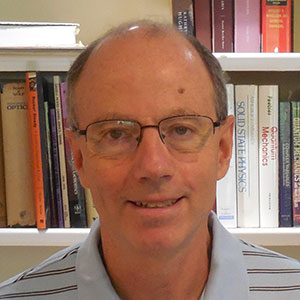Laboratory of Chemical Physics
Lab Sections & Chiefs
-
Biophysical Chemistry Section
William A. Eaton, M.D., Ph.D., NIH Distinguished Investigator -
Biophysical Nuclear Magnetic Resonance Spectroscopy Section
Adriaan Bax, Ph.D., NIH Distinguished Investigator -
Computational Biophysics Section
Robert B. Best, Ph.D. -
Section of Molecular and Structural Biophysics
G. Marius Clore, M.D., Ph.D., FMedSci, FRS, NIH Distinguished Investigator -
Section of Nanoscale Single-Molecule Dynamics
Quan Wang, Ph.D., Stadtman Tenure-Track Investigator -
Single-Molecule Biophysics Section
Hoi Sung Chung, Ph.D. -
Solid State Nuclear Magnetic Resonance and Biomolecular Physics Section
Robert Tycko, Ph.D., NIH Distinguished Investigator -
Ultrafast Biophysical Chemistry Section
Philip Anfinrud, Ph.D.
Biophysical Chemistry Section
William A. Eaton, M.D., Ph.D., NIH Distinguished Investigator, Section Chief
Research in this section for many years was concerned with the thermodynamics, kinetics, and mechanism of fiber formation of hemoglobin S, and its relation to the pathophysiology and therapy of sickle cell disease. The expertise developed in this research is now being used to develop sensitive and high throughput assays on sickle red cells to screen for compounds that could be used as a specific drug for sickle cell disease. The initial screen is focused on drug libraries that have already been tested in clinical trials.
Biophysical Nuclear Magnetic Resonance Spectroscopy Section
Adriaan Bax, Ph.D., NIH Distinguished Investigator, Section Chief
The Biophysical Nuclear Magnetic Resonance Spectroscopy Section develops new techniques and approaches for determining the structure and dynamics of bioactive molecules. Specific projects focus on developing methods for improving the accuracy of biomolecular structures determined by NMR data. Work in this area emphasizes the development of better measurement techniques for interproton distances and dihedral angles from NOEs and J couplings. We are also developing a quantitative relation between molecular structure and chemical shifts/chemical shift anisotropy.
Computational Biophysics Section
Robert B. Best, Ph.D., Section Chief
Molecular simulations, together with theory, are a very promising tool for obtaining mechanistic information about protein folding and misfolding and the function of both folded and intrinsically disordered proteins. For this purpose, the Computational Biophysics Section develops coarse-grained and all-atom simulation models, as well as methods for enhancing simulation efficiency. These models can be applied to help interpret experiments, supplying detailed information that would be difficult to determine from experiment alone.
Section of Molecular and Structural Biophysics
G. Marius Clore, M.D., Ph.D., FMedSci, FRS, NIH Distinguished Investigator, Section Chief
The Section of Molecular and Structural Biophysics studies the structure and dynamics of proteins, protein-protein complexes, and protein-nucleic acid complexes using multidimensional nuclear magnetic resonance (NMR) spectroscopy, and we develop and apply novel NMR and computational methods to aid in these studies. Special emphasis is placed on complexes involved in signal transduction and transcriptional regulation, and on AIDS and AIDS-related proteins. Recent focus has been on the development of novel NMR methods to detect, visualize, and characterize transient, sparsely populated states of macromolecules. Such states, which are invisible to conventional biophysical techniques, including crystallography, electron microscopy and single molecule spectroscopies, play a critical role in macromolecular recognition, allostery induced fit, conformational selection, and molecular assembly.
Section of Nanoscale Single-Molecule Dynamics
Quan Wang, Ph.D., Stadtman Tenure-Track Investigator, Acting Section Chief
The section of nanoscale single-molecule dynamics develops new techniques to visualize a diverse array of biological processes at the level of individual molecules. Rapid feedback control is used to hold single biomolecule still in aqueous solution (the ABEL trap) for studying biochemical dynamics unlimited by diffusion. Scientific interests include structural heterogeneity of biomolecules, assembly/disassembly of multi-subunit enzymes and post-translational modifications. By pushing the limits of current single-molecule modalities and expanding the dimensionality of measurements, detailed observations are provided of biomolecule actions and interactions in real-time, one molecule at a time. Quantitative physical modeling and simulations are conducted to understand these rich datasets with the goal of revealing biophysical principles that underpin biological function.
Single-Molecule Biophysics Section
Hoi Sung Chung, Ph.D., Section Chief
The Single-Molecule Biophysics Section studies protein conformational dynamics using single-molecule fluorescence spectroscopy. Understanding molecular mechanisms of biochemical reactions involving macromolecules such as proteins and nucleic acids requires characterization of conformational diversity in a process in addition to thermodynamics and kinetics. We develop and use multi-color single-molecule fluorescence spectroscopic and imaging methods to study heterogeneity in various processes including folding, binding, and aggregation of proteins.
Solid State Nuclear Magnetic Resonance and Biomolecular Physics Section
Robert Tycko, Ph.D., NIH Distinguished Investigator, Section Chief
The Solid State Nuclear Magnetic Resonance and Biomolecular Physics Section, directed by Robert Tycko, develops solid-state NMR methods for structural studies of biopolymers and applies these methods to problems in biophysical chemistry and structural biology. This section also investigates structures of protein assemblies, such as amyloid fibrils, with electron microscopy and develops new technology for high-resolution magnetic resonance imaging.
Ultrafast Biophysical Chemistry Section
Philip Anfinrud, Ph.D., Section Chief
The Ultrafast Biophysical Chemistry Section investigates the relationships between protein structure, dynamics, and function using ultrafast time-resolved laser spectroscopy and X-ray crystallography. These experimental techniques employ an ultrashort laser "pump" pulse (shorter than 10-13 seconds) to trigger a photophysical or photochemical reaction and a variably delayed "probe" pulse that measures the spectral or structural evolution of the protein. This pump-probe technique provides the means to acquire "snapshots" of a protein as it executes its designed function. By monitoring the changes that occur over time, from femtoseconds to milliseconds, we aim to build a foundation for understanding how proteins execute their designed tasks with high efficiency and selectivity. Researchers in the section use this technique to study various model systems, including ligand-binding heme proteins and their mutants, bacteriorhodopsin, and photoactive yellow protein. Using a microfocusing femtosecond spectrometer that is capable of probing protein dynamics in small crystals, researchers can compare dynamics in solution and crystals. This allows us to assess the extent to which crystal contacts influence protein dynamics. Moreover, ultrafast studies of protein photophysics have led to more efficient protocols for chromophore photoactivation, thereby improving the quality of time-resolved X-ray structures.


